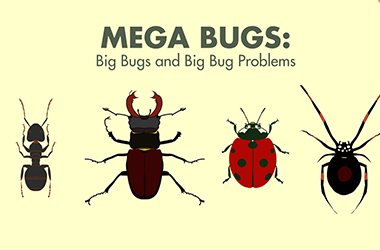Subterranean Termite Facts
- Habitat: found throughout the United States, typically in warmer climates
- Size: ⅛ to ⅜ inches in length
- Appearance: Depends on the termites role in the colony: workers are flattened, relatively small, with bodies ranging from cream-colored to coal-black in hue and gray or brown wings; soldiers are similar but are distinguished by their powerful jaws; swarmers have straight, bead-like antennae, a thick waist and a pair of long, equal-length wings that break off easily.
Subterranean Termite Behavior
Subterranean termites are the most common type of termites that infest homes. These termites need moisture to survive. They are closely associated with the soil, where they typically construct an underground nest or a series of interconnected nests, hence the name “subterranean termites.” Soil serves as a source of moisture that helps protect termites from the drying effects of air. It also shields termites from predators (ants, birds, lizards, etc.) that feed on them.
Subterranean termites excavate narrow tunnels through the soil, creating a network through which they can travel very long distances to reach food. They also transport soil above ground to construct mud tubes and to line their feeding galleries in wood. Subterranean termites are social insects that live in nests or colonies in the soil. Termite colonies are organized into castes depending on tasks – workers, soldiers, and reproductive (swarmers).
- Get Rid of Desert Termites
- Infestation and Damage
- Bites and Treatement
